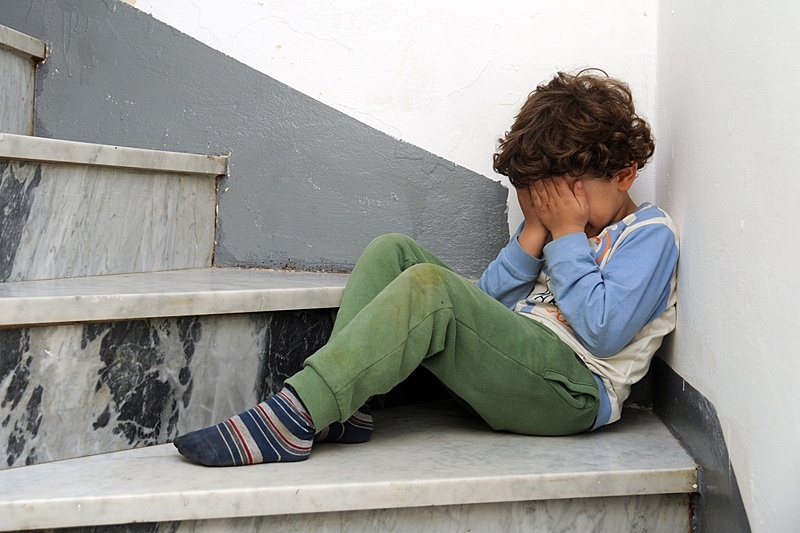
Adversity and maltreatment are known to have profound neurophysiological impacts on a developing child. There is growing evidence that in the earliest years of life, stress and adversity affect development and lead to increased risk of physical and psychological health conditions across the life course. Individuals with early-life abuse and adversity are at a significantly higher risk than the general population of developing a range of problems in learning, behavior, physical and mental health conditions including mood and anxiety disorders, character issues, schizophrenia, asthma, obesity, cardiovascular disease, chronic obstructive pulmonary disease, diabetes, kidney disease, and autoimmune disorders (Cox, Perry, & Frederico). Young children are forming foundational neural circuits and are in a period of heightened plasticity such that their brains are particularly sensitive to the influence of the environment (Shonkoff, Slopen, & Williams, 2021).
Living with a lack of safety and in a chronic state of fear and hyper-vigilance is associated with a high release of the stress hormone cortisol and with hypertrophy (enlargement) of the amygdala, a subcortical brain structure that interprets the “emotional coloring” of experiences. Prolonged activation of the stress response can disrupt the development of the brain architecture and other organ systems, thereby increasing the risk for stress related disease and cognitive impairment well into the adult years. The “toxic stress response” can occur when a child experiences strong, frequent, and/or ongoing adversity such as emotional, physical, and sexual abuse, chronic neglect, caregiver substance abuse or mental illness, exposure to violence, racism and discrimination, and/or family economic hardship. Adversity can become biologically embedded (Nelson, Bhutta, Harris, Danese, & Samara, 2020).
Researchers have found consistent relationships between adversity and disrupted functioning of the hypothalamic-pituitary-adrenal (HPA) axis, the autonomic nervous system, and the immune system (Smith & Pollak, 2020). Stressors activate the HPA axis which launches a cascade of hormonal and behavioral responses to threats and challenges. Such responses are adaptive in the short term, but chronic or frequent HPA axis activation can lead to hypo or hyperactive reactivity, often interpreted as dysregulation (Young et al, 2021). The autonomic nervous system regulates body processes such as blood pressure, heart and breathing rates, and the metabolism. The system has two main divisions, the sympathetic which stimulates body processes and the parasympathetic which inhibits the processes. For example, the sympathetic division increases blood pressure and the parasympathetic decreases it. The sympathetic division prepares the body for stressful situations or fight or flight by increasing heart rate and the force of contractions. The parasympathetic is in control during ordinary situations, slows the heart rate, and decreases blood pressure (Low, 2021).
The preschool period is a crucial time for developing emotional regulation, stress tolerance, and interpersonal effectiveness. Due to the energy required to survive the effects of trauma, a child’s capacity to regulate, practice social skills, pay attention, and learn in an academic setting can be limited (Hebert, Langevin, & Charest, 2020). A child may shut down, withdraw, zone out (freeze) or become impulsive, engage in risk taking, and have outbursts of anger (fight). Not only will the children have difficulty learning, but their relationships will also be negatively impacted. Disruptive behavior may obscure the underlying issue of trauma. Emotional signs of trauma that interfere with learning include intrusive thoughts, lack of motivation, and low self-esteem. Somatic or body-based signs include frequent illness, stomach aches, and the like.
Trauma-focused cognitive behavioral therapy (TF-CBT) appears to be effective for youth as does combined somatic/cognitive therapies, exposure/prolonged exposure, play therapy, and eye movement desensitization and reprocessing or EMDR (Mavranezouli et al, 2020). Somatic interventions have been found to improve self-regulation in youth exposed to stress and trauma. A recent scoping review of the literature noted evidence for the effectiveness of mindfulness, yoga, and breathing exercises for improving degree of calmness, self-evaluation skills, positive thinking, attention, self-control, social competence, and self-awareness.
___
References
Cox, A., Perry, B, & Frederico, M. (2000). Resourcing the system and enhancing relationships: Pathways to positive outcomes for children impacted by abuse and neglect. Child Welfare, 98(6), 177-202.
Hebert, M., Langevin, R., & Charest, F. (2020). Disorganized attachment and emotional dysregulation as mediators of the association between sexual abuse and dissociation in preschoolers. Journal of Affective Disorders, 267, 220-228.
Lebow, H. (April 18, 2022). How can childhood trauma affect learning? Downloaded from https://psychcentral.com/ptsd/....
Low, P. (2021). Overview of the autonomic nervous system. Merck Manual. Merck & Company.
Mavranezouli, M., Megnin-Viggars, O., Daly, C., Dias, S., Stockton, S., Meiser-Stedman, R., Trickey, D., & Pilling, S. (2020). Research review: Psychological and psychosocial treatments for children and young people with post-traumatic stress disorder: A network meta-analysis. The Journal of Child Psychology and Psychiatry, 61(1), 18-29.
Neal, A. (2021). Somatic interventions to improve self-regulation in children and adolescents. Journal of Child and Adolescent Psychiatric Nursing, 34, 171-180.
Nelson, C., Bhutta, Z., Harris, N., Danese, A., & Samarra, M. (2020). Adversity in childhood is linked to mental and physical health throughout life. BMJ, 371, 1-9.
Shonkoff, J., Slopen, N., & Williams, D. (2021). Early childhood adversity, toxic stress, and the impacts of racism on the foundations of health. Annual Review of Public Health, 42, 115-134.
Smith, K. &Pollak, S. (2020). Rethinking concepts and categories for understanding the neurodevelopmental effects of childhood adversity. Perspectives on Psychological Science, 16(1), 67-93.
Terradas, M., Poulin-Latulippe, D., Paradis, D., & Didier, O. (2021). Impact of early relational trauma on children’s mentalizing capacity and play: A clinical illustration. European Journal of Trauma & Dissociation, 5, 1-10.
Young, E., Doom, J., Farrell, A., Carlson, E., Englund, M., Miller, G., Gunnar, M., Roisman, G., & Simpson, J. (2021). Life stress and cortisol reactivity: An exploratory analysis of the effects of stress exposure across life on HPA-axis functioning. Developmental Psychopathology, 33(1), 301-312.

